If you’re planning a trip to Italy, Venice needs to be on your list of stops — it’s beautiful and should be seen at least once, but the sheer volume of tourists in the city is enough to drive anyone insane. When you need a break from the crowds, the flooding in Venice is getting out of control, or you just want a change of scenery, head out to Verona. You can easily reach Verona from Venice by train — it’s only an hour-and-ten-minute journey on the TrenItalia. Popularized as the setting in Shakespeare’s Romeo and Juliet, Verona has much more to offer visitors than Juliet’s Balcony. It’s an intimate yet lively town full of great food, beautiful sights, and a well-preserved history that makes it an ideal alternative to its busy neighbor.
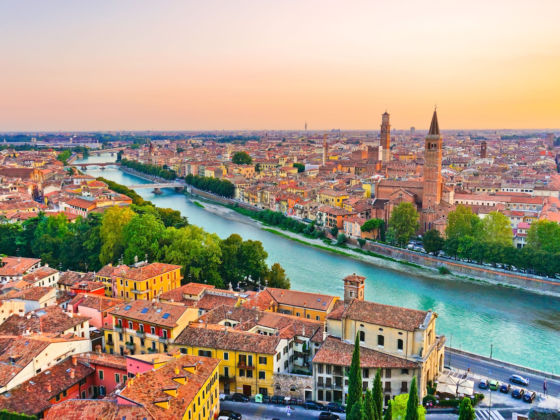
10 Amazing Experiences That Prove You Should Trade Venice for Verona
1. Forget about the canals and marvel at the Arena instead.
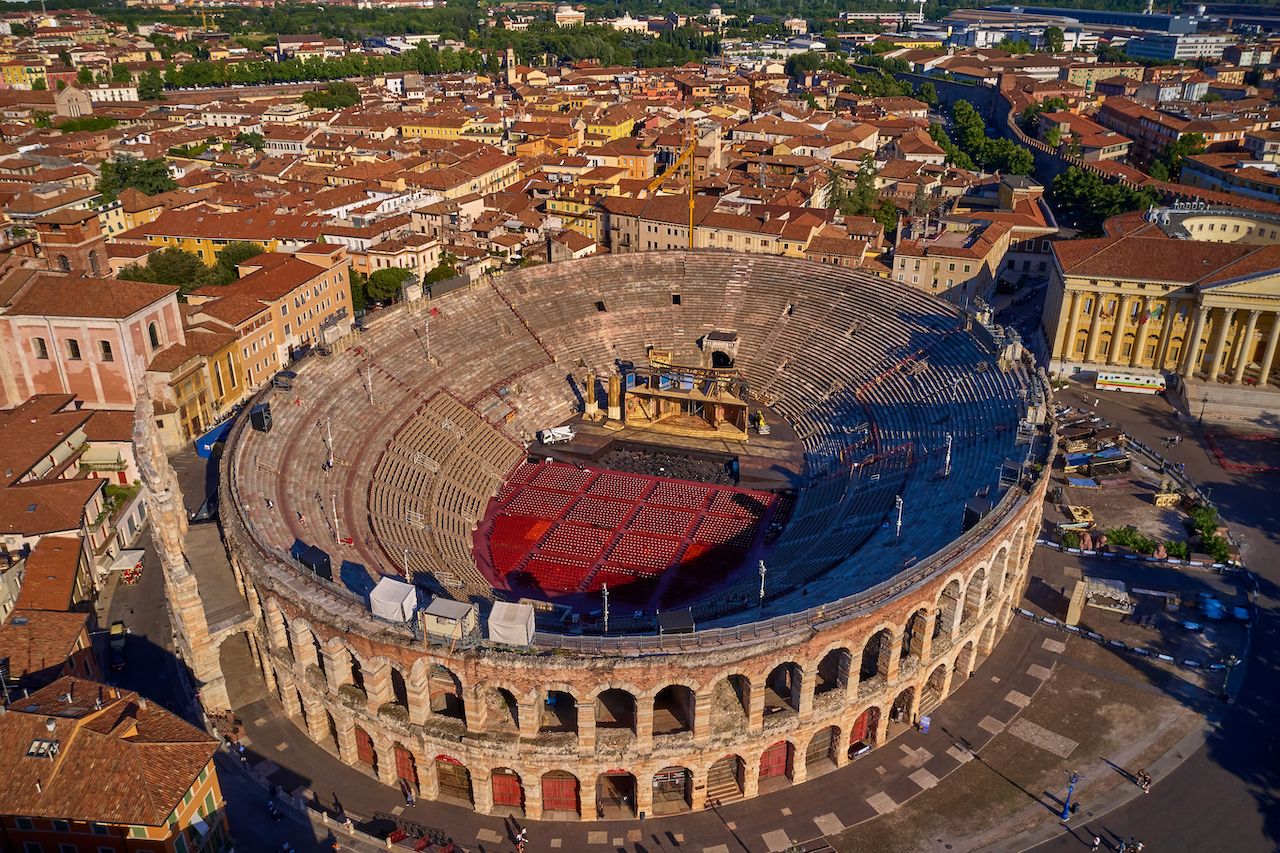
Photo: Andrea Berg/Shutterstock
While Venice is known for its canals and gondolas, Verona’s most striking attraction is the Arena. This Roman amphitheater was built in the first century, and it is unusual in appearance because it is built of pink, rather than white, marble. Additionally, the Verona Arena is rare because it is still a functional venue for opera performances and music concerts. Every summer, the Arena houses four operas, the Arena di Verona opera festival, and numerous independent concerts. In fact, the Verona Arena will host the closing ceremony of the 2026 Milan Winter Olympics. Of course, there does not need to be an event for visitors to see the Arena; you can tour the structure Tuesday through Sunday from 8:30 AM to 7:30 PM and Monday from 1:30 PM to 7:30 PM for about $11.25. Climb to the top of the concentric rows, and you will have breathtaking views of the entire old town.
2. Piazza Brá measures up to Saint Mark’s square.
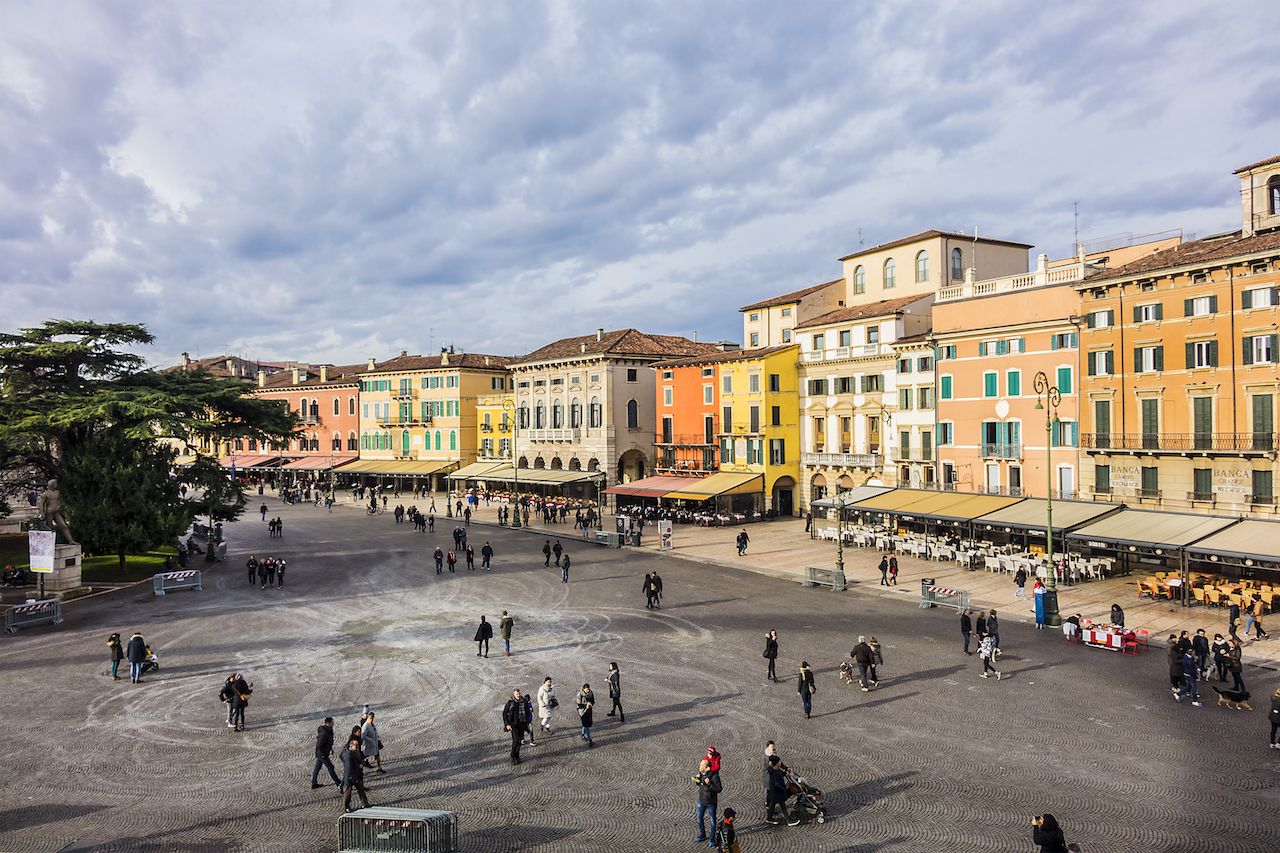
Photo: Kiev.Victor/Shutterstock
Piazza Brá is the central plaza in the old town of Verona. It is the first sight you will see when walking into Verona through the Porta Nuova from the train station. Piazza Brá surrounds the aforementioned Arena. It is a romantic setting with a fountain, greenery, and park benches. You’ll likely spot foreign student groups visiting the Arena, young couples holding hands, and locals drinking wine or espresso in the cafes. This is also a great spot to observe the architecture in Verona, which is a unique mixture of Venetian and Austrian influences.
3. Check out the ancient frescoes in San Giorgetto.

Photo: goga18128/Shutterstock
At the eastern edge of Corso Sant’Anastasia, there are two churches: San Giorgetto and Sant’Anastasia. Though it is worth your time to visit both, San Giorgetto is unusual in its breathtaking, centuries-old simplicity. This tiny, four-walled room is empty, save for faded frescoes adorning the walls and a free-standing column with visitor information. Completed in the early 1300s, San Giorgetto was originally built as a small chapel to the Teutonic Knights (some of whom are buried beneath the floor). In the early 1800s, the chapel was used by Napoleon Bonaparte’s soldiers as a stable for their horses. Standing inside San Giorgetto, you can all but feel the centuries of history swirling throughout this humble, unassuming structure.
4. Learn more about Italian art at Galleria Moderna Achille Forti.
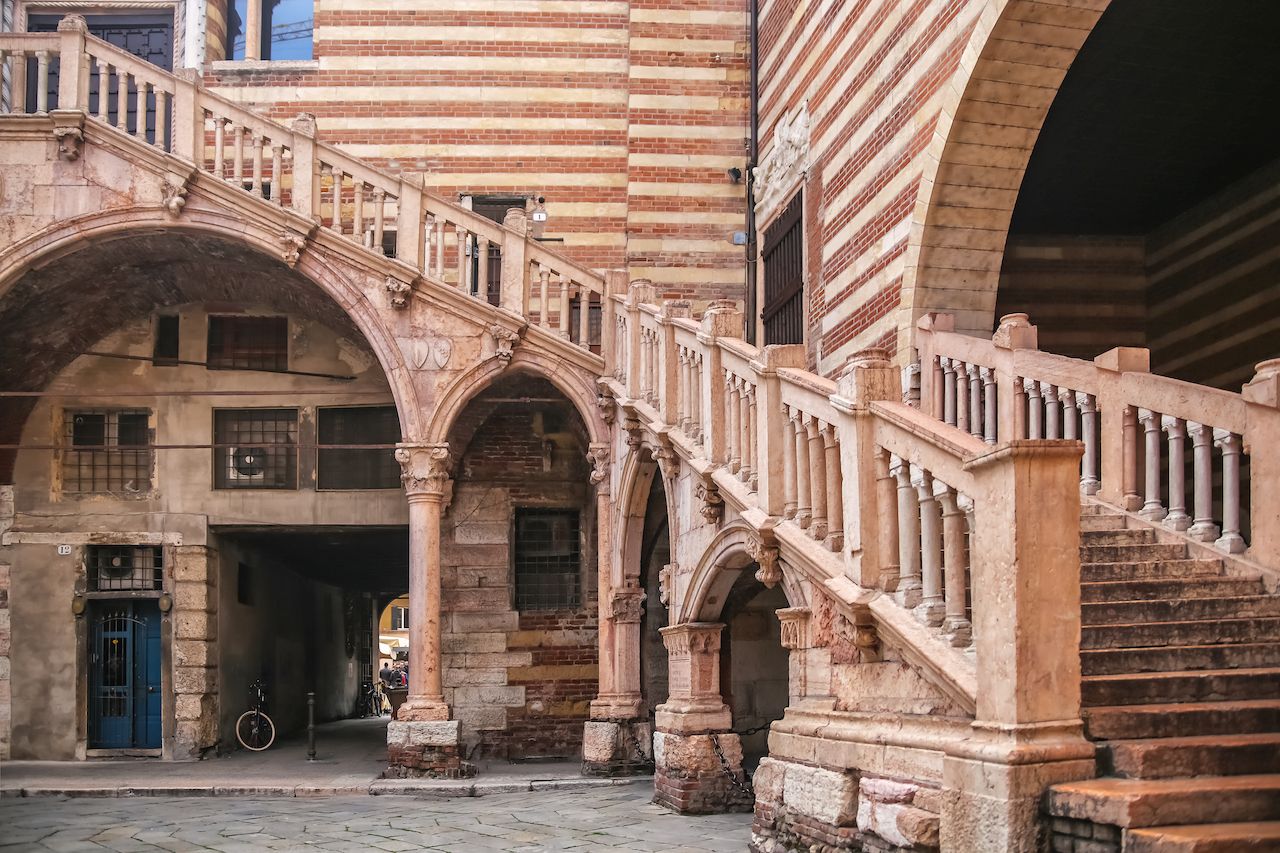
Photo: roundex/Shutterstock
Achille Forti was one of the main art collectors in Verona throughout the 20th century. Today, his collection is displayed within the Palazzo della Ragione, which is very close to the beautiful Piazza Erbe. This palace is sure to catch your eye with its striped, neoclassical exterior; delicate staircase; and refined moldings. Entry costs about $9.00. Inside, you’ll find a wide variety of paintings and sculptures from Italian artists, dating back from 1840 to 1940. The most famous painting within this gallery is Francesco Hayez’ Meditazione. Additionally, the palazzo contains the 17th-century Cappella dei Notai, a stunning vaulted chapel with biblical scenes. Regardless of your knowledge of art history, an afternoon at the Achille Forti Gallery is a beautiful, worthwhile experience.
Your gallery ticket also includes entry to the adjacent Torre dei Lamberti. This 12th-century tower offers stunning, panoramic views of the city. To reach the terraces and the belfry, you can climb a 368-step spiral staircase or take a transparent elevator that allows you to experience the architecture without the leg pain.
5. Escape the crowds across Ponte della Vittoria.
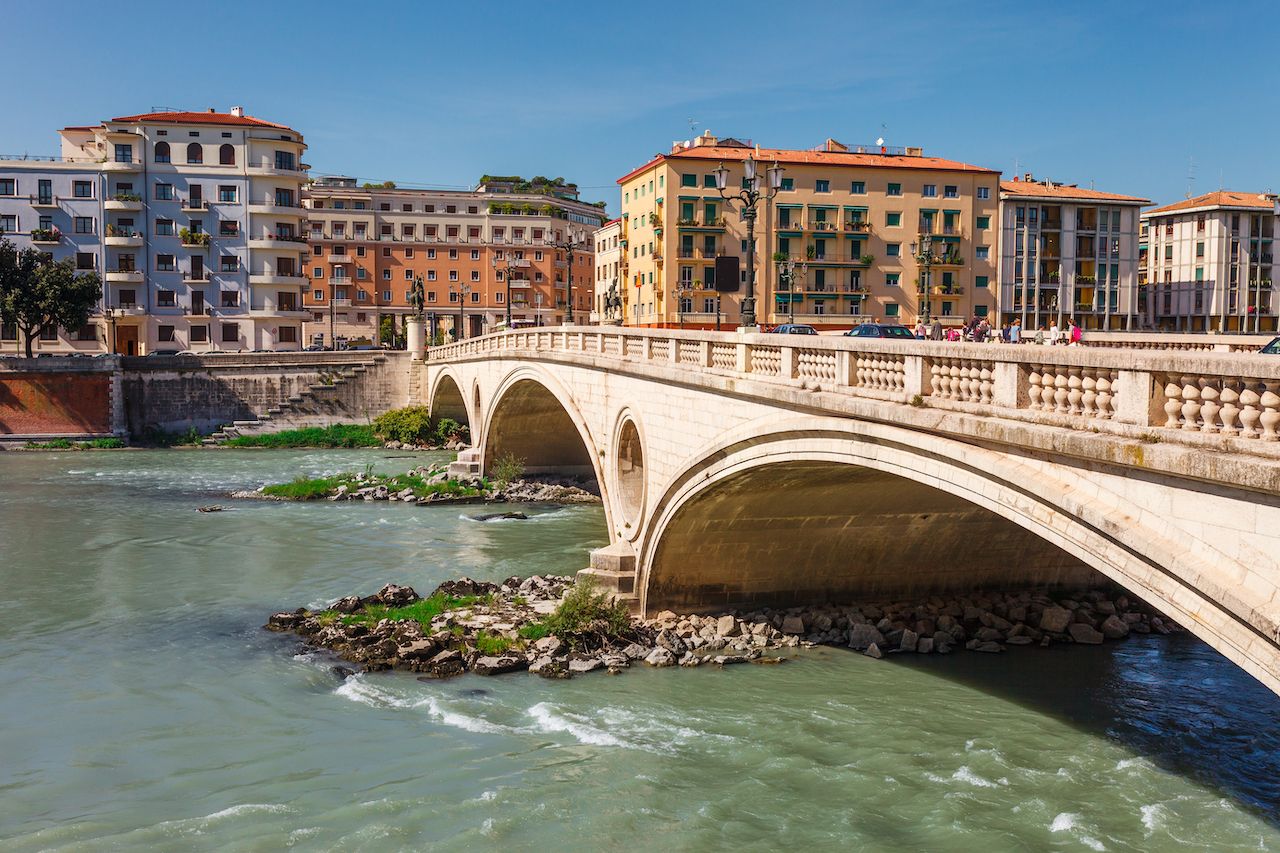
Photo: Oleg_P/Shutterstock
Verona does not equal the volume of tourists in Venice, but if you feel the need to find a quiet place to sit, walk across the Ponte della Vittoria and onto Via IV Novembre. On the left-hand side of the street, you will find Elk Bakery and Ziga Bar. Either one is a perfect spot to sit and grab a cappuccino in peace — you don’t get that in Venice.
6. Check out the Castelvecchio Museum.
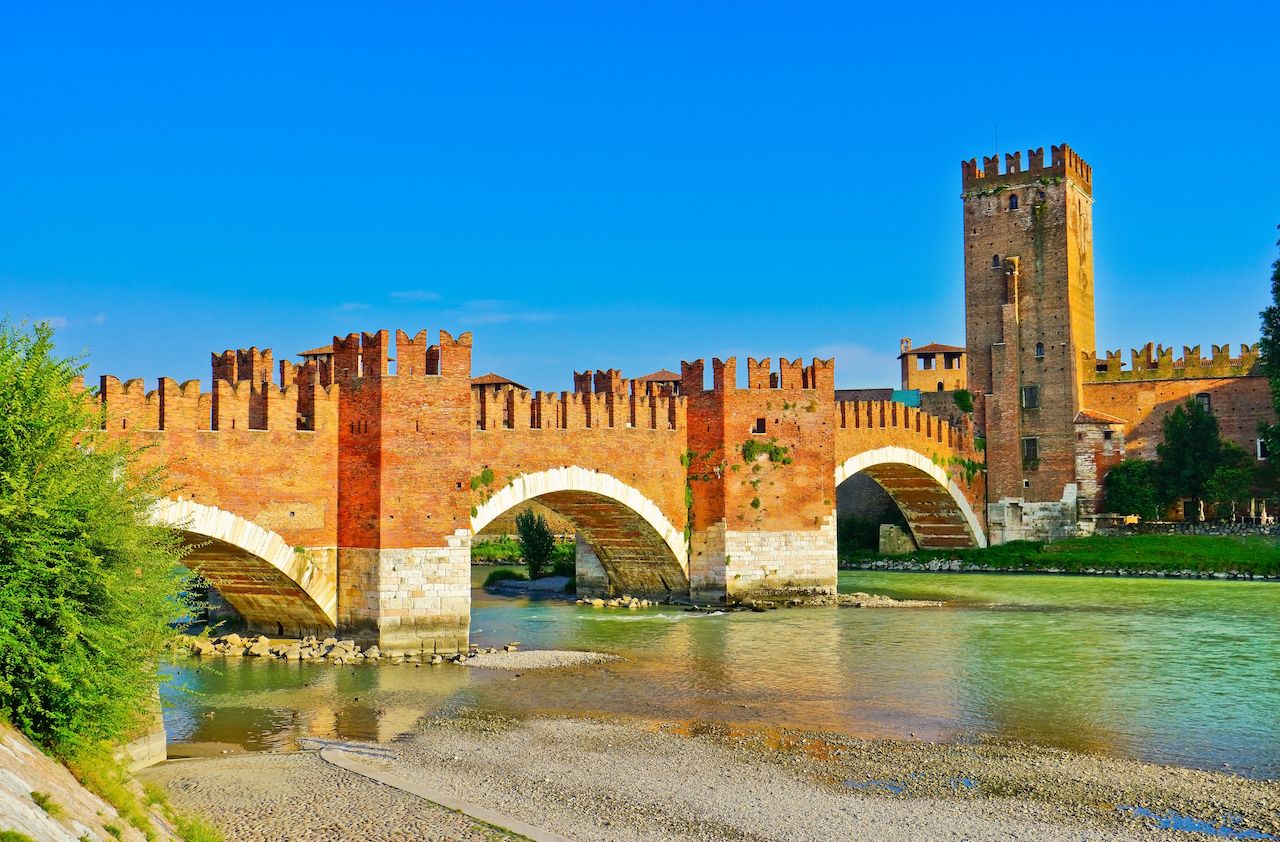
Photo: Javen/Shutterstock
The Castelvecchio Museum, located on the banks of the Adige River, contains a collection of sculptures, paintings, ancient weapons, ceramics, gold work, and miniatures, ranging from the sixth to the 18th century. However, the most interesting part of this museum is the building itself: a renovated medieval castle. The Castelvecchio was originally built between the 1350s and 1370s, and it is a minimalist, imposing Gothic structure made out of red bricks. The Castelvecchio was restored between 1959 and 1973, with the objective of tastefully applying modern sensibilities while preserving the castle’s history. If you visit the museum, you can tour this unique fusion of new and old, which is somewhat more interesting than the actual museum displays. Castelvecchio Museum admission is about $6.80.
7. Sample Veronese food without ceremony.

Photo: Scapin 1935/Facebook
In Verona, you can pretty much enter any restaurant and expect Italian culinary excellence. Gastronomy Scapin allows you to sample a wide variety of Veronese food without bombast or frills. Inside, you’ll find a wide selection of Italian wines, a delicatessen, and a display of fresh dishes prepared in house. You can purchase timballos, baked pasta, parmigiana, cooked veggies, cheeses, fish salads, burrata, prosciutto, and more. Gastronomy Scapin allows you the option to either dine in its low-key kitchen or purchase food for takeaway.
8. Visit the otherworldly Scaliger Tombs.

Photo: Gimas/Shutterstock
The Scaliger Tombs of Verona are a funerary complex, built by the Scaliger family to house the bodies of their most distinguished family members. The Scaligers ruled Verona from the 1200s to the end of the 1300s — in fact, they were the ones who built the Castelvecchio.
The tombs are enclosed by a wrought-iron fence, but they are tall enough that you can view them from the streets. The five tombs are built in the Gothic style, somewhat reminiscent of the spires atop St. Mark’s Cathedral in Venice. These peculiar, pink-and-white-marble structures simultaneously feel fragile and eternal; the carved figures and patterns are ornate and delicate, but they also carry an imposing, weighty quality. You’ll have to see for yourself — you can find the Scaliger Tombs on Via Santa Maria in Chiavica, just outside of Piazza dei Signori.
9. Get lost in the old town.
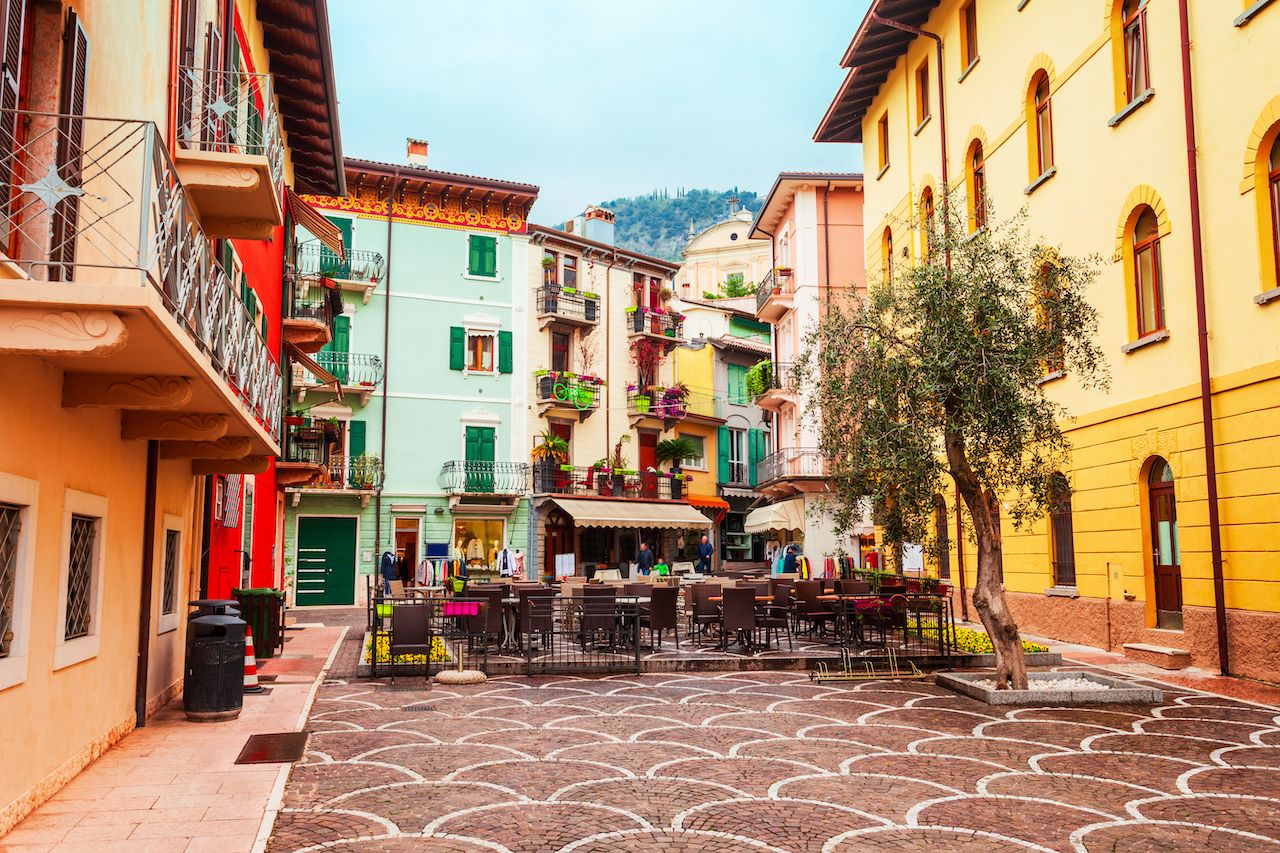
Photo: saiko3p/Shutterstock
Unlike Venice and its many narrow streets, Verona is a rather intuitively navigable city, flanked by the Adige River and Porto Nuova. Leave your map in your hotel room for a couple hours and just get lost in the winding streets (you will be able to find your way back, trust us). Try to notice things you don’t usually notice, from the shape of the cobblestones to the designs of the medieval window shutters.
10. Visit the flea market in Piazza San Zeno.

Photo: frantic00/Shutterstock
On Sundays, the square in front of the Basilica di San Zeno Maggiore (also worth wandering into) transforms into an open-air flea market. Stop by and you’ll find antique lamps, costume jewelry, clothes, paintings, cigarette tins, furniture, rugs, and many other fun knick-knacks. If you’re good at haggling, the more power to you. Remember, most of the vendors are local, so learning a few key phrases in Italian would be useful before you decide to go.